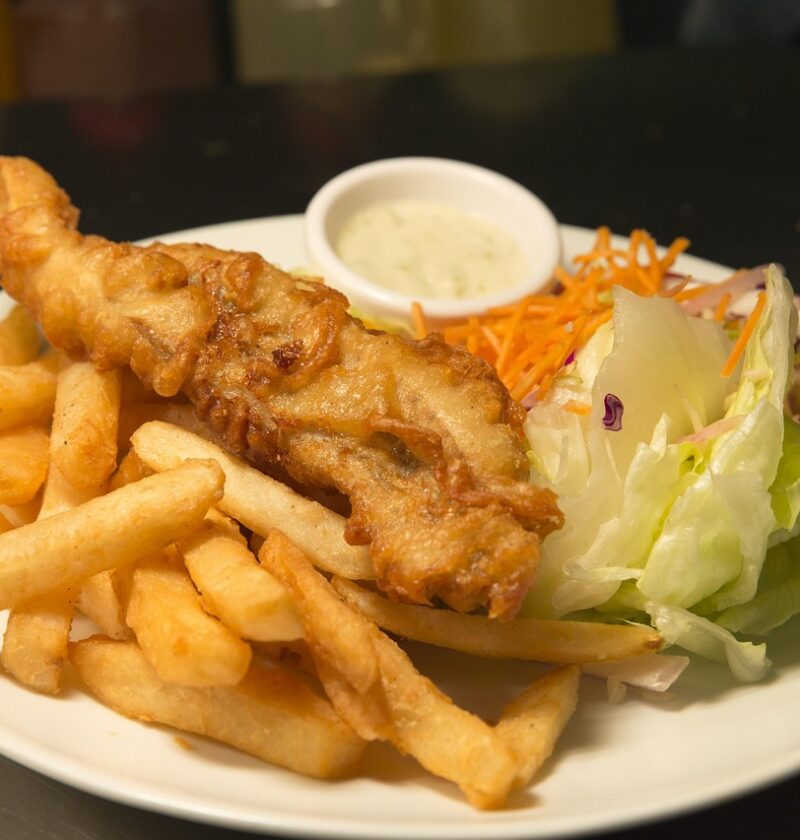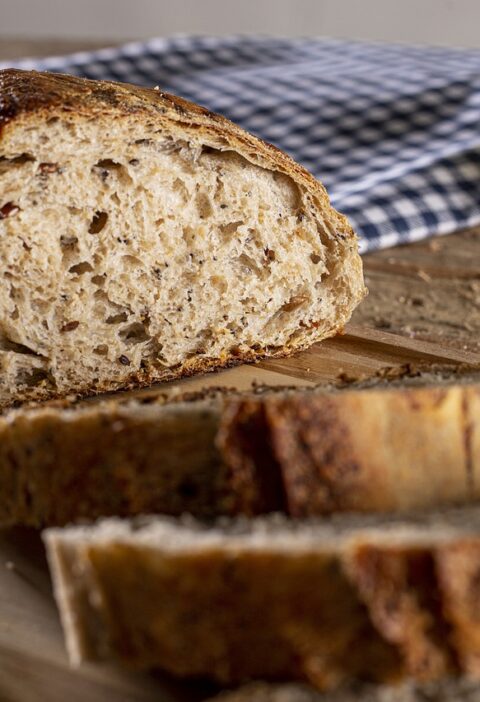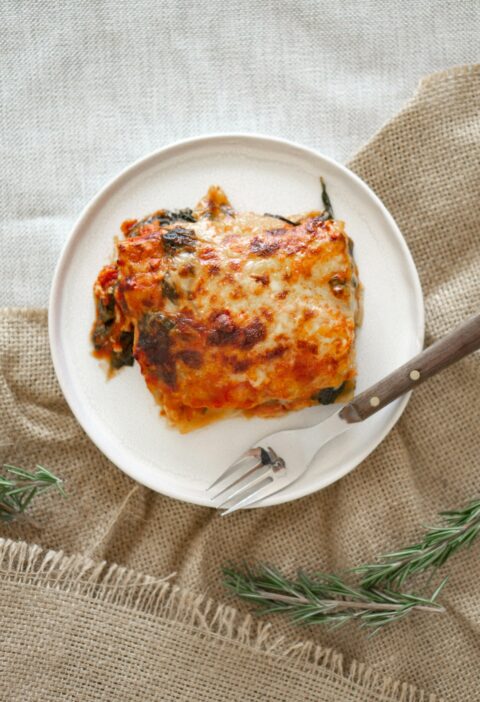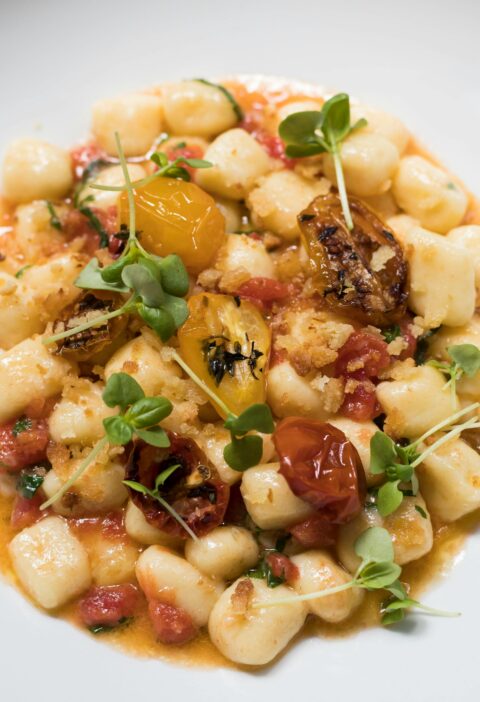A British icon reinvented: flaky white fish in a cricket-flour batter, paired with crunchy chips. High in protein, low in impact – your eco-friendly comfort food fix.
Difficulty: Easy
Preparation time: 20 minutes
Cooking time: 20 minutes
Serves: 2 portions
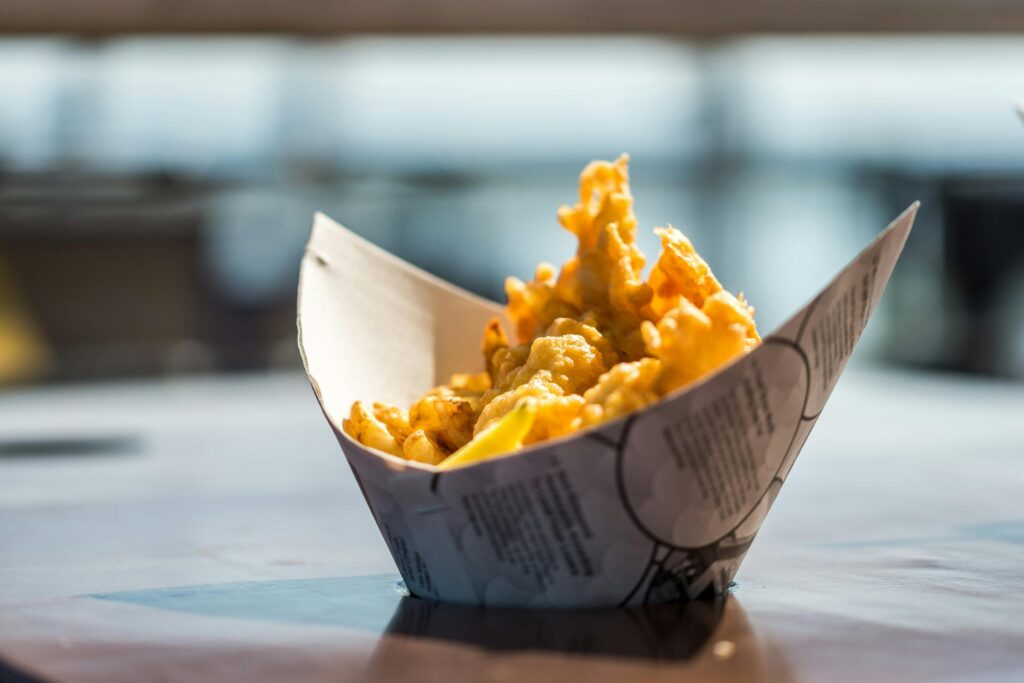
Ingredients:
For the fish:
- 2 fillets of firm white fish (e.g. cod, haddock, or pollock)
- 60g all-purpose flour
- 40g cricket flour
- 1 tsp baking powder
- ½ tsp salt
- 150ml cold sparkling water (or beer, for extra crispiness)
- Extra flour (50/50 wheat and cricket) for dredging
- Oil for deep frying (vegetable, sunflower, or rapeseed)
For the chips:
- 2 large potatoes (Maris Piper or Russet), peeled and cut into thick chips
- Salt to taste
- Optional: malt vinegar for serving
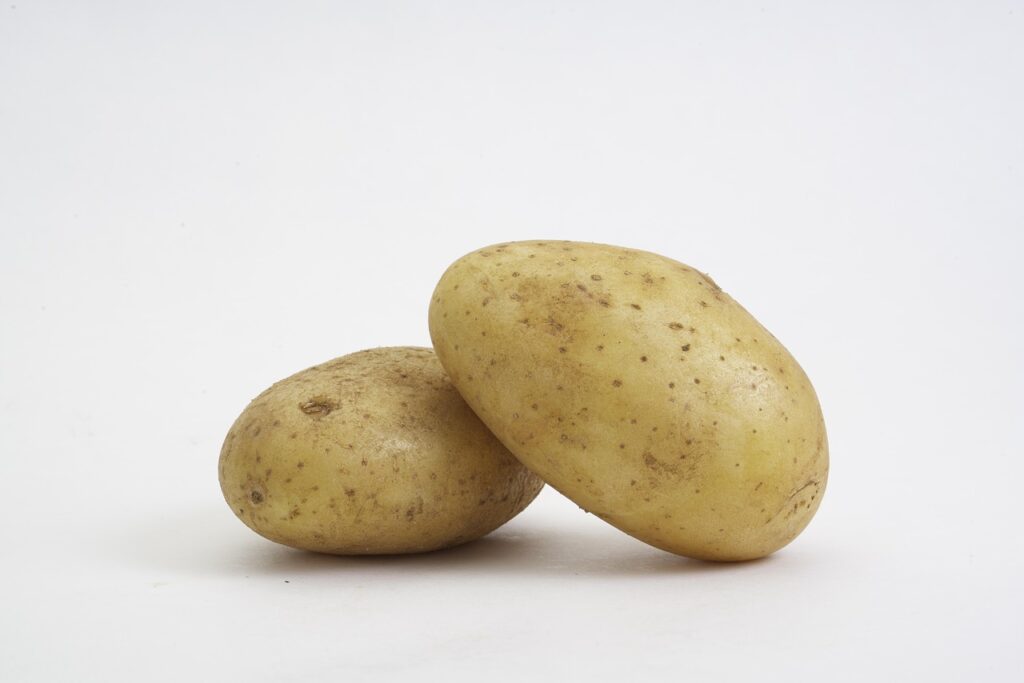
Instructions:
- Prep the chips:
Rinse the cut potatoes in cold water to remove excess starch. Pat dry with a towel.
Heat oil in a deep pan to 130°C (265°F). Fry the chips in batches for 5–6 minutes until soft but not browned. Remove and drain on paper towels. - Make the batter:
In a bowl, mix the all-purpose flour, cricket flour, baking powder, and salt. Gradually whisk in the sparkling water until you have a smooth, thick batter. Let it rest for 5 minutes. - Fry the fish:
Heat the oil to 180°C (355°F). Lightly dredge each fish fillet in the flour mix, then dip into the batter, ensuring it’s well coated.
Gently lower into the hot oil and fry for 6–8 minutes, until golden and crispy. Turn once halfway. Remove and drain on a wire rack or paper towels. - Finish the chips:
Raise the oil temperature back to 180°C. Re-fry the chips for 2–3 minutes until crisp and golden. Season with salt immediately. - Serve hot:
Plate up your cricket-battered fish and fresh chips with a wedge of lemon, tartar sauce, and mushy peas if desired.
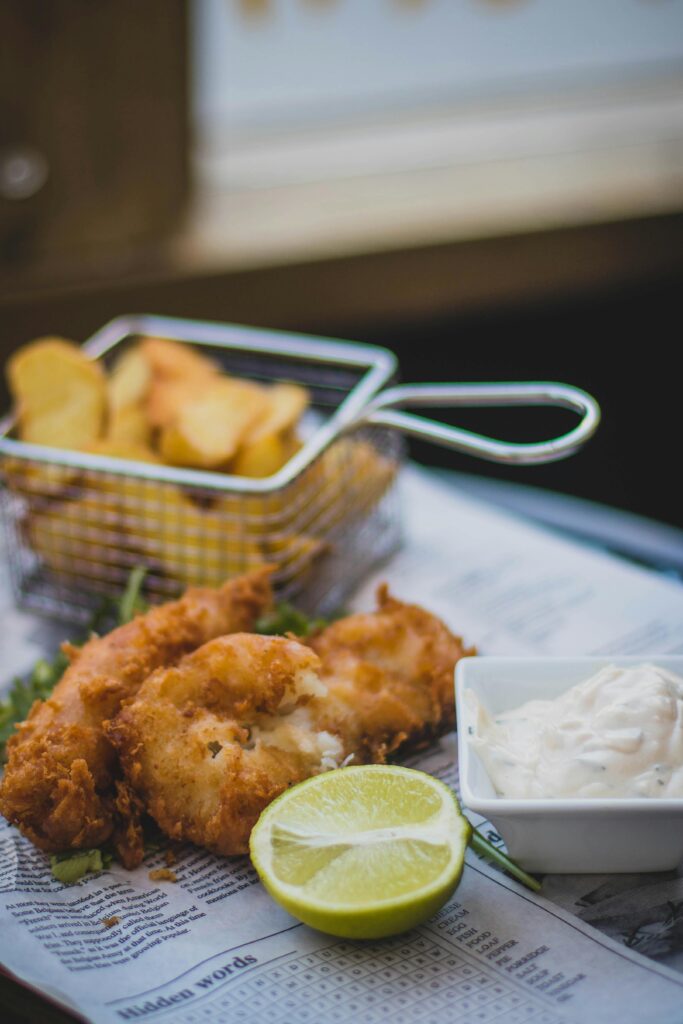
Tips & Twists:
- Add a pinch of paprika or garlic powder to the batter for a flavor boost.
- For a gluten-free version, substitute wheat flour with rice flour and use gluten-free beer.
- Want more cricket power? Dust the finished fish with toasted cricket flour for extra crunch and protein.
Fish, sustainable, seafood, fried, comfort food, cricket flour, protein, British, eco-friendly, modern cooking, street food, alternative protein, sustainable eating, fish and chips, classic remake.
Try our Cricket Flour Mix here – Link external
Discover more insect-based recipes – Link external
Why Use Cricket Flour?
Cricket flour is an excellent source of sustainable protein, making it a smart and eco-friendly choice for modern recipes. Packed with essential nutrients like vitamin B12, iron, and omega-3 fatty acids, it supports muscle growth, boosts energy, and contributes to overall well-being. Unlike traditional protein sources, cricket flour has a minimal environmental impact, requiring less land, water, and feed. Its mild, nutty flavor blends seamlessly into baked goods, snacks, and even savory dishes, adding a nutritional boost without altering taste. Whether you’re an athlete, a health enthusiast, or simply curious, cricket flour is a versatile and forward-thinking ingredient worth exploring.
Back in the 1990s, the idea of eating insects in Europe was more of a joke than a serious proposal. Crickets were associated with faraway countries, not dinner plates in Paris or Berlin. But over the past three decades, attitudes have started to shift.
Driven by environmental concerns and the search for sustainable protein sources, crickets are slowly entering the European food scene. Unlike traditional livestock, they require less water, space, and feed, and they emit far fewer greenhouse gases. That makes them attractive to a generation more conscious of their ecological footprint.

